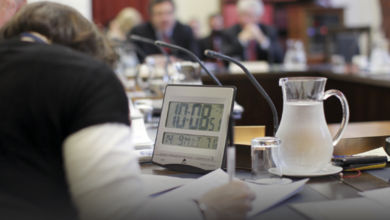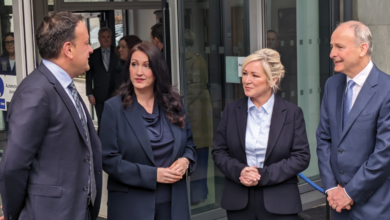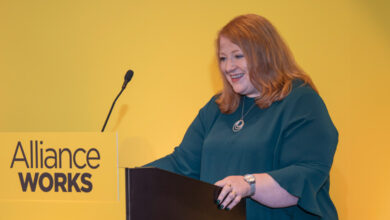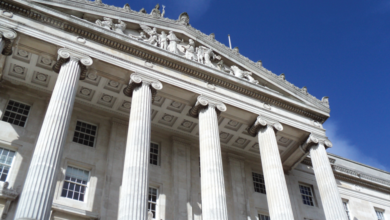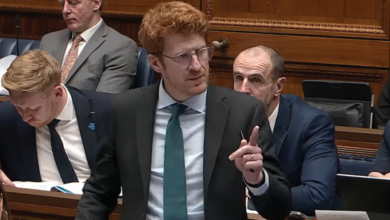Peace heroines
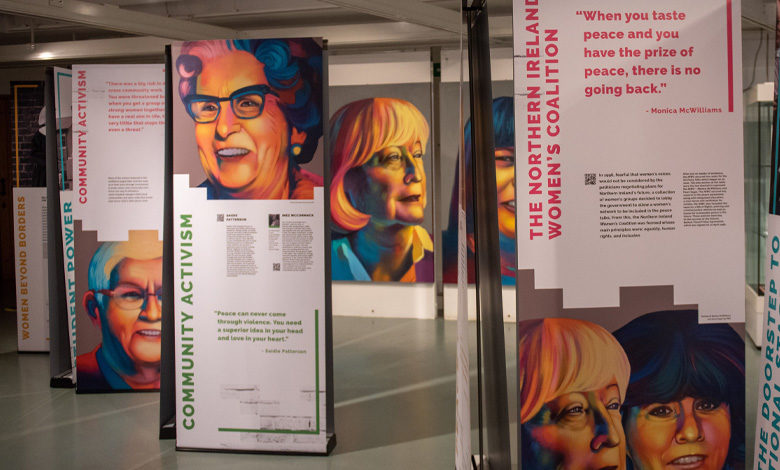
Ahead of the 25th anniversary of the Good Friday Agreement, an exhibition has been making its way through the island of Ireland and beyond, paying tribute to the women who helped build the peace process.
The Peace Heroines exhibition is being ran by HerStory, in collaboration with National Museums NI, and the Irish Department of Foreign Affairs’ Reconciliation Fund. The exhibition features portraits by the artist FRIZ, as well as a series of youth workshops.
FRIZ has stated that she sought to create loud, colourful artwork, artwork that demands space, “much like the women portrayed within the canvas”.
The exhibition is currently on display at the Derry Tower Museum and a replica of the exhibition will make its way to the Irish embassy in London on 1 February 2023, followed by New York in March before being displayed at Queen’s University Belfast ahead of the 25th anniversary of the Good Friday Agreement.
On 8 February, a Peace Heroines exhibition will be on display in the United States Congress, where it will be opened by the Irish Ambassador to the United States, Geraldine Byrne Nason.
Pat Hume

The late Pat Hume was the wife of the late former SDLP leader and Nobel Peace Prize winner John Hume, seen by many as the biggest advocate of the Good Friday Agreement. Described as his “political adviser and antenna”, Hume was a teacher who supported the family financially when her husband was in his early years in politics.
Upon her husband’s election to the European Parliament in 1979, Hume became a visible public figure as a constituency office manager, credited with helping many people who fell victim to the conflict with advice on housing, security, and education. Hume and her husband’s joint actions were critical in the journey of persuading one-time opponents to support the peace process.
Bronagh Hinds

A co-founder of the Northern Ireland Women’s Coalition, Bronagh Hinds served as the party’s chief strategist in the negotiations that led to the signing of the Good Friday Agreement. As a student activist, she attended the civil rights march which later became known as Bloody Sunday in 1972, before becoming Welfare Officer in the Queen’s University Students’ Union.
She stated her rationale for the foundation of the Women’s Coalition as being that she “noticed that there was going to be very few female voices around the table that was negotiating the future landscape for Northern Ireland. I think there was a recognition that more female voices could bring new perspectives and a positive dynamic”.
Eileen Weir

A proud native of the Shankill Road, Eileen Weir embarked on a journey which brought her from paramilitary to peacemaker. Having joined the Ulster Defence Association at the age of 16, she later joined a trade union and became convinced that poverty and injustice did not discriminate between religion.
Since then, Weir has worked tirelessly for women’s and community rights both through her trade union and later through her role as a community relations worker at the Shankill Women’s Centre, bridging religious and social divides.
Susan McCrory

Susan McCrory is the centre manager of the Falls Women’s Centre in west Belfast, which she first joined in 1991. She has played an instrumental role in uniting women of all national and religious backgrounds to come together and “explore the past and build a better future”.
McCrory has stated: “We want to give women a voice at the table, to speak up in their own communities and have the confidence to stand up for what they believe in.” This is something she has done through grassroots work, including in collaboration with the Shankill Women’s Centre.
Saidie Patterson

The late Sarah ‘Saidie’ Patterson was a trade unionist, women’s rights activist, and peacemaker. Pushed into adulthood by the death of her mother aged 13, she became a “trailblazing” trade unionist, and later a peace activist.
As chair of Women Together, and through her activism with the Girls Club Union, she was a devoted advocate of bringing women from the Shankill and Falls communities together for a range of activities. For this, she was honoured with five international peace awards.
Monica McWilliams

A former MLA and co-founder of the Northern Ireland Women’s Coalition, Monica McWilliams was one of just two women at the negotiating table in the talks which led to the Good Friday Agreement.
In addition to her background as an advocate for the Northern Ireland Poverty Lobby, McWilliams later became a professor of women’s studies and Chief Commissioner at the Human Rights Commission, where she drafted the advice on a bill of rights for Northern Ireland.
Pearl Sagar

In the lead up to the all-party talks in 1996, Pearl Sagar’s name was put forward to be one of the two women at the table, representing the Northern Ireland Women’s Coalition alongside Monica McWilliams.
A social worker from east Belfast, she was seen as a “streetfighter” and someone who would “take no nonsense”. Sagar and her colleague, Monica McWilliams, stood in defiance of continuous sexism, before they and the NIWC secured important aspects core to the success of the Good Friday Agreement.
Anne Carr

A devoted advocate of integrated education, Anne Carr spent the 1990s as a committed peace activist as coordinator of Women Together, working with women from all backgrounds and spearheading Talking and Listening Circles.
A believer in a grassroots-first approach to unity, she was one of 30 people who founded Community Dialogue to “help transform understanding and build trust amongst people who often hold opposing political, socia,l and religious views”.
May Blood

The late May Blood began work at the age of 14, in her local linen mill. As a shop steward for the Transport and General Workers’ Union, she acquired advocacy skills which would later serve her in her activism with the Early Years Project, helping to found three community centres in the Shankill area.
A strong believer in integrated education to break down sectarian divisions, Blood was appointed to the House of Lords by Tony Blair in 1999 and was awarded an OBE by Elizabeth II for her work in labour relations.

